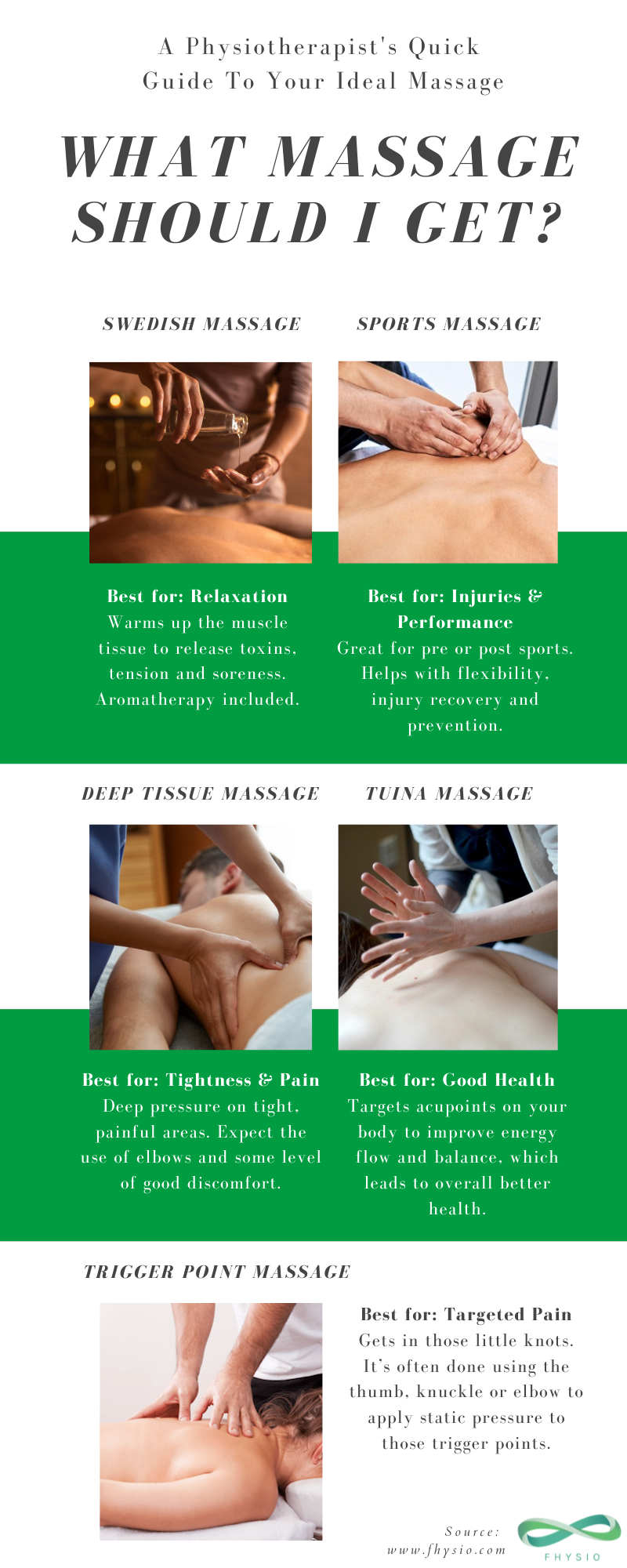Choosing a massage from a list of choices may seem like a luxury, but it’s essential to ensure that you get the type your body needs.
The type of massage that is best for you will depend on your general health goals and how well your body can handle a given technique. When it comes to choosing the proper massage for yourself, you may be feeling a little lost.
When trying to figure out what kind of massage technique is best for you, it’s tough because there are many different therapy practitioners’ styles.
There are many different types of massage, and each may be better for specific ailments. Below are five popular examples.
1. Swedish Massage
For relaxation and stress relief, try the Swedish massage.
Often known as the “classic” massage, Swedish massage is preferred for relief from sore muscles, stiffness in joints, and stress reduction. A Swedish Massage is a form of therapy that allows the practitioner to manipulate your muscles to increase blood flow.
Though it does happen to be quite relaxing, Swedish massage also relieves muscle soreness when it warms up the body tissue and releases toxins. Physiotherapists often recommend it for first-time clients who need improved muscle relaxation.
2. Sports Massage
For Performance enhancement, preventing and treating injuries, try a sports massage I.
If you are looking for a multi-functional massage type, Sports Massage is your to-go-to solution. Massage therapy can help you recover from an injury and prevent future injuries. It is also effective for enhancing your range of motion, which may be useful before or after your workout routine.
Although this massage is called a Sports Massage, it can actually help people who are not athletes. A sports massage is perfect for clients with active lifestyles (regardless of their sport) or muscle pain requiring more attention.
3. Deep Tissue Massage
For postural issues, painful and tight muscles, try a deep tissue massage.
The Deep Tissue Massage uses pressure to a greater degree to help to remove tension from tighter, more painful muscles. Deep tissue massage is specifically designed to target the deepest layers of muscle fascia and connective tissues.
A Swedish massage is similar to a Deep Tissue massage but differs in that it exerts less pressure and focuses on tight or knotted muscles. Whereas the Swedish massage is typically one of relaxation, Thai massage can be somewhat uncomfortable but considered a good pain.
A deep tissue massage is often recommended for physical therapy and being sore from repetitive postural stress.
4. Tuina Massage
For improved health and dealing with illnesses, try a Tuina Massage.
Tuina Massage, originating from Ancient China and the main branch of its traditional Chinese medicine (TCM) system, is one type of massage.
It is based on the fundamental theory of Traditional Chinese Medicine, your body’s crucial energy flow. Tuina is a type of massage which removes any Qi blockages or imbalances which sometimes lead to pain or even illness. The massage is used to apply pressure on specific acupoints in your body, a process that mimics acupuncture but uses fingers in the place of needles.
5. Trigger Point Massage
For targeting localized pain, try a trigger point massage.
Trigger Point Massage is a type of massage that targets those bothersome and often hidden knots in the body. A tight knot builds up when toxins accumulate in those trigger points, and Trigger Point Massage helps to release those knots by targeting pressure on these common areas.
All massages are therapeutic, but treating the trigger points a person has is often what helps relieve them of their chronic pain.
Trigger Point massage is excellent for those who experience tightness, tingling, or chronic pain in specific areas of the body.
In conclusion, this article advises choosing one based off where it hurts most or whether you are currently experiencing chronic pain that needs more attention.
It’s just about finding out which one will work best to target your areas where you feel tightness or tingling and choosing from there. There are also specific massages that might be better suited for those who experience chronic pain as well, so it’s always best to ask!
Please include attribution to www.fhysio.com with this graphic.





